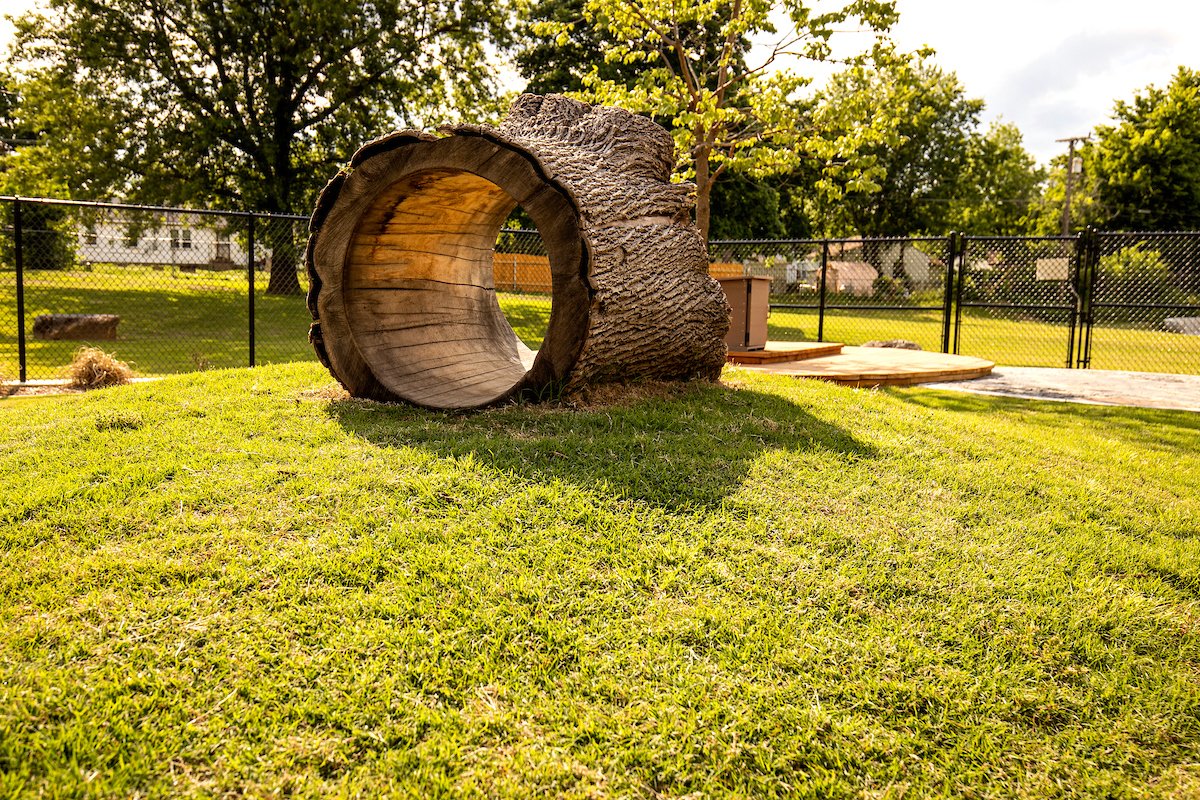
Outdoor Classroom Q&A
Why is outdoor play important for children?
According to the American Academy of Pediatrics, studies have found that children who spend more time in nature exploration had improved learning outcomes. Playing, exploring and experiencing outside and enjoying nature can improve physical health, help children become more engaged in learning, and have a positive influence on behavior. Research also shows that when children spend time in natural settings, they have less anger, less aggression, and better impulse control.
Nature classrooms don’t just benefit early childhood. In general, stress and depression are lower for people of all ages who spend time in nature.
What makes a good outdoor classroom?
Every outdoor classroom should have areas for children to engage, explore, create and discover nature. There should be a shade structure to provide sun protection for children and teachers alike. Another important feature for every outdoor classroom is a gathering area where a class can congregate and learn together or where children can perform and build confidence in front of their peers. From there, the sky really is the limit. Outdoor classrooms should encourage creativity and physical exploration. From mud kitchens and reading nooks to raised garden beds and natural water or sensory tables, a good outdoor classroom will place children in a safe, natural setting so they can reach their full potential.
How do outdoor classrooms help students?
Outdoor classrooms provide endless opportunities for learning and development, including:
Physical Development
Improving balance
Tuning fine-motor strength and coordination
Moving to manipulate and explore objects
Decreasing sedentary behaviors and encouraging physical activity
Social/Emotional Development
Building self-awareness through interactions with peers
Allowing safe risk-taking by learning limits and boundaries and through challenging play
Solving problems and making decisions
Cognitive Learning
Paying attention to sights and sounds
Showing curiosity and motivation
Improving language and literacy skills through experiences
Developing authentic math and science skills in nature
Expressing themselves creatively through the arts
Why is outdoor play essential for early learning?
Outdoor play encourages children to try new things in their own time, which increases curiosity, confidence, empathy, self-discipline, initiative and independence. Outdoor activities also help young children with important skills such as balance, coordination and social collaboration.
How do outdoor classrooms help teachers?
Outdoor classrooms promote creativity while allowing for different environments for teaching. Being outdoors reduces stress and improves mental and physical health and sleep. Educators that teach outdoors see improvement in children’s behavior and indoor classroom challenges. Academic performance improves as well.
How much would an outdoor classroom cost?
The cost of an outdoor classroom widely depends on how much space is available, what components you choose to include, and who you hire to design and build the outdoor classroom. The best way to get actual numbers is to reach out to a company that specializes in designing and building outdoor classrooms and request a proposal.
